RLC series circuits
An RLC series circuit is an electrical circuit that consists of a resistor (R), an inductor (L), and a capacitor (C) connected in series. In such a circuit, the three components are arranged one after another along the same path for the flow of electric current.
Quantities Used in RLC Circuits:
Resistance (R):
Resistance is a measure of how much a component resists the flow of electrical current. In an RLC circuit, resistors dissipate energy in the form of heat. Resistance is measured in ohms (Ω).
Inductance (L):
Inductance is the property of a coil or inductor to store energy in a magnetic field when current flows through it. Inductors resist changes in current flow and store energy in their magnetic fields. Inductance is measured in henrys (H).
Capacitance (C):
Capacitance is the ability of a capacitor to store electrical energy in an electric field. Capacitors oppose changes in voltage and release stored energy when needed. Capacitance is measured in farads (F).
Frequency (f):
Frequency represents the number of cycles per second in an alternating current (AC) signal. In RLC circuits, the frequency of the input signal affects the impedance and the behavior of the circuit.
Impedance (Z):
Impedance is the total opposition that a circuit presents to the flow of alternating current. It is a complex quantity and is affected by the resistance, inductance, and capacitance in the circuit. Impedance is measured in ohms (Ω).
Reactance (X):
Reactance is the opposition offered by inductors and capacitors to the flow of alternating current. Inductive reactance (X_L) increases with frequency, while capacitive reactance (X_C) decreases. Reactance is also measured in ohms (Ω).
Phase Angle (φ):
The phase angle represents the relationship in time between voltage and current waveforms in an AC circuit. In RLC circuits, the phase angle depends on the balance between resistive, inductive, and capacitive elements.
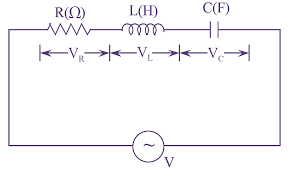
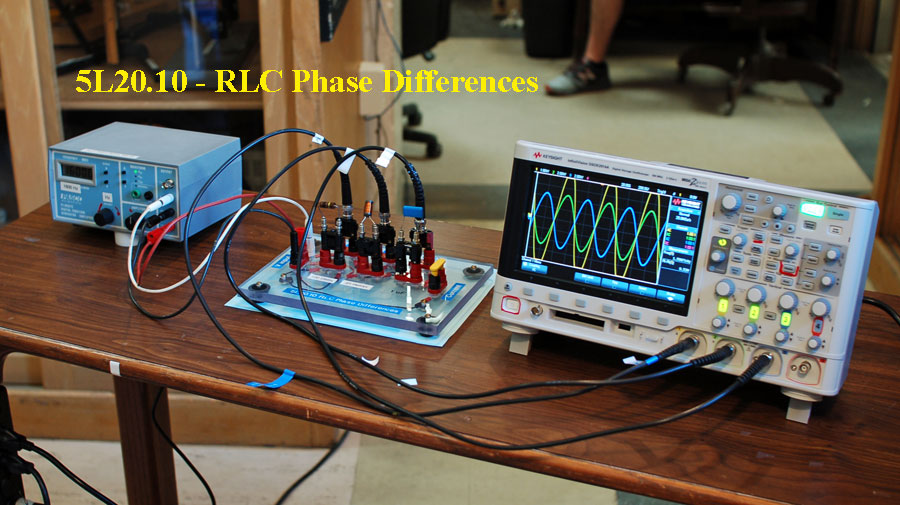
Power Triangle
In RLC circuits, the concept of the power triangle involves understanding the relationships between real power (P), reactive power (Q), and apparent power (S).
Real Power (P):
Real power is the actual power consumed by a circuit and is measured in watts (W). It represents the energy transferred from the source to the load that performs useful work.
Reactive Power (Q):
Reactive power is the power exchanged between the inductive and capacitive elements of a circuit without doing any useful work. It is measured in volt-amperes reactive (VAR).
Apparent Power (S):
Apparent power is the combination of real power and reactive power in a circuit. It is the vector sum of real power and reactive power and is measured in volt-amperes (VA).
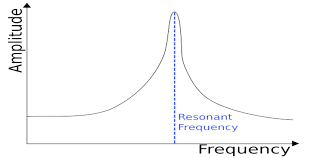
Resonance Condition in RLC circuits
Resonance in RLC circuits refers to a condition where the inductive (L) and capacitive (C) reactances in a series circuit balance each other, leading to specific frequencies at which the circuit exhibits maximum response.
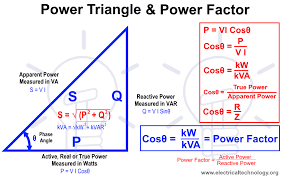
POWER FACTOR
The power factor is the cosine of the phase angle (φ) between the voltage and current waveforms. It indicates the efficiency of power transfer in the circuit. Power factor is given by the ratio of real power to apparent power (PF = P / S).
Innovative Practical Applications of RLC Circuits:
1. Communication Systems:
RLC circuits are fundamental in the design of filters for communication systems. Bandpass filters, for example, utilize a combination of resistors, inductors, and capacitors to allow signals within a specific frequency range to pass through.
2. Electronic Tuners:
RLC circuits are employed in electronic tuners for radios and televisions. Variable capacitors and inductors in these circuits allow users to tune in to different frequencies.
3. Power Factor Correction:
In industrial applications, RLC circuits are used for power factor correction. Capacitors are strategically placed to compensate for inductive loads, improving overall power factor and energy efficiency.
4. Audio Equipment:
RLC circuits are found in audio equipment for equalization purposes. Filters with specific frequency response characteristics, such as high-pass or low-pass filters, use combinations of resistors, inductors, and capacitors.
5. Resonant Circuits:
RLC circuits are used in resonant applications, such as inductor-capacitor (LC) or inductor-capacitor-resistor (LCR) resonant circuits. These find applications in wireless charging systems, oscillators, and frequency-selective circuits.
6. Medical Devices:
RLC circuits are used in medical devices such as impedance plethysmographs, which measure changes in impedance for monitoring blood volume changes in a body part.
7. Power Electronics:
In power electronics, RLC circuits are used in devices like inverters and converters for efficient energy transfer and control.
8. Antenna Matching Networks:
RLC circuits are employed in antenna matching networks to ensure maximum power transfer between the transmission line and the antenna.
Understanding the power triangle and the relationship between real, reactive, and apparent power is crucial for optimizing power systems and ensuring efficient energy usage. The power factor plays a key role in this optimization process.
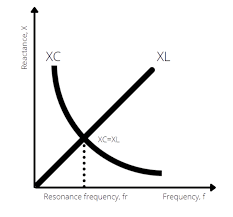
RLC Calculator
Additional Insights and Future Scopes for RLC Circuits:
- Studying nonlinear RLC circuits for complex systems like chaos theory and nonlinear signal processing.
- Integrating RLC circuits into quantum computing systems for analog information processing.
- Using in energy harvesting devices to capture ambient vibration and power low-energy electronics.
- Employing in smart grids for efficient energy distribution, voltage regulation and monitoring.
- Improving RFID technologies with RLC circuits for enhanced logistics, healthcare and retail applications.
- Advancing biomedical sensing and imaging through developments in impedance spectroscopy.
- Incorporating RLC-like structures into metamaterials to create unique electromagnetic properties.
- Mimicking biological neural networks with RLC circuits for neuromorphic computing.
- Utilizing RLC circuits in filters and components for 5G networks and future wireless systems.
- Integrating RLC components with photonic devices to enhance integrated photonics.
- Miniaturizing RLC components for wearable health monitoring systems and flexible electronics.
- Optimizing RLC circuits through machine learning for more efficient and adaptive designs.
- RLC circuits have potential to enable innovations in diverse technological fields in the future.
Indian-Specific Trivia on RLC Circuits and Electrical Systems:
What voltage standard does India follow for domestic electrical circuits?
India follows a standard voltage of 230V for domestic electrical circuits, with a frequency of 50Hz.
Who sets the electrical safety standards for appliances in India?
The Bureau of Indian Standards (BIS) sets safety standards for electrical appliances in India.
What initiatives is India exploring to improve the electrical grid?
India has been actively exploring the implementation of smart grid technologies to enhance the efficiency and reliability of the electrical grid.
What role do RLC circuits play in renewable energy integration in India?
RLC circuits are integral in the design of inverters and converters used to integrate renewable energy sources like solar and wind into the grid.
What are some significant power quality challenges in India?
In India, power quality challenges like voltage fluctuations and harmonic distortions are significant concerns.
How do RLC circuits contribute to rural electrification efforts?
Rural electrification efforts in India involve microgrid deployments, where RLC circuits contribute to the design of reliable and efficient microgrid systems.
How are RLC circuits utilized in EV charging infrastructure?
As India embraces electric vehicles, RLC circuits are used in charging stations for efficient power transfer and voltage regulation
What considerations are important when upgrading old electrical systems?
Upgrading outdated wiring in old buildings involves considerations of RLC circuits and impedance matching for optimal performance.
A few more trivia questions!
Why is electrical safety awareness important in India?
Electrical safety campaigns are vital in India given the diverse population and varying awareness levels.
How are RLC circuits integrated into Indian electronics manufacturing?
The electronics manufacturing sector is increasing focus on producing power electronics like RLC circuits, aligning with the "Make in India" initiative.
What role do RLC circuits play in rural electrification?
RLC circuits enable rural electrification through decentralized power systems using small-scale renewables and energy storage.
Where is research on RLC circuits being done in India?
India has research centers dedicated to electrical engineering and power systems that contribute to advancements in RLC circuit technologies.